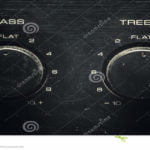It’s the time of year for saving money!
In a recent article for Audiophile Review, I wrote about vibration control devices for audio — “feet”- and was pleased to find that people were sufficiently interested in the subject (and apparently liked the article, itself enough) that, to date, they have shared it with their friends more than six hundred times.
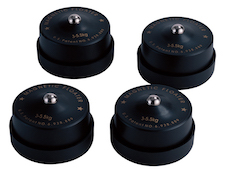 The reason, I think, for that high “share” count is that vibration really does affect the sound of our systems, and minimizing it or, if possible, eliminating it entirely, can definitely make a worthwhile improvement to the sound and the musical enjoyment we derive from listening to them.
The reason, I think, for that high “share” count is that vibration really does affect the sound of our systems, and minimizing it or, if possible, eliminating it entirely, can definitely make a worthwhile improvement to the sound and the musical enjoyment we derive from listening to them.
It’s possible, though, that there may be another reason for that interest and the large number of “shares”: At heart, I think we’re all – at least to some degree – tinkerers and, just like the ladies who wanted to add their own egg to the original Duncan Hines cake mix before they would buy and use it, we all want to have some participation in creating our systems, besides just selecting its components and plugging them all together. That “hands-on” aspect may also have something to do – even beyond its often better sound quality – with the resurgence of analog: There’s just something satisfying about the ritual of playing a record or threading-up a reel-to-reel tape that adds to the overall experience and makes it feel like we’re sharing in the musical process instead of just passively listening.
If that’s really the case, it may go a long way toward explaining the whole “do it yourself” phenomenon: Maybe it’s not just that we want to save some money (although at the price of many of the pricier Hi-Fi tweaks, that’s certainly a laudable goal) , but that we’d like to claim a little of the credit for making something that sounds good and that we can be proud of.
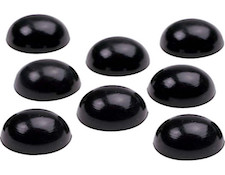 Personally, I’m a big believer in getting my money’s worth, and if I can make or re-purpose something that works as well as a commercial product for less than I would have to pay to buy one, that pleases me a lot, and I suspect, it may do the same for you. That’s why I wrote that article about how to make cable lifters out of plastic cups instead of paying as much as hundreds of dollars to buy a set of them.
Personally, I’m a big believer in getting my money’s worth, and if I can make or re-purpose something that works as well as a commercial product for less than I would have to pay to buy one, that pleases me a lot, and I suspect, it may do the same for you. That’s why I wrote that article about how to make cable lifters out of plastic cups instead of paying as much as hundreds of dollars to buy a set of them.
And do plastic cup cable lifters work? Let’s just put it this way: In my sound room at home, I’m using those very same cable lifters (that must have cost me twenty minutes of time and less than a dollar to make the whole set) to support my multi-thousand dollar XLO Limited Edition speaker cables as they run between my multi-thousand dollar Jeff Rowland Design Group amplifiers and my multi-thousand dollar ACA Seraphim speakers, and I’m as happy as two clams and a partridge in a pear tree. What matters is NOT what stuff costs, or whether it was bought or tinkered together, it’s whether it works well and sounds good; and my system works and sounds just FINE, thank you.
 There are any number of things, just like those cable lifters, that you can make or re-purpose at home and have them work just fine for YOU. Just in the area of “feet”, for example – the subject that was so well received in that recent article — there are all kinds of cheap and easy things that you can do that you might like a lot and that cost so little that , if you DON’T like them, it doesn’t matter.
There are any number of things, just like those cable lifters, that you can make or re-purpose at home and have them work just fine for YOU. Just in the area of “feet”, for example – the subject that was so well received in that recent article — there are all kinds of cheap and easy things that you can do that you might like a lot and that cost so little that , if you DON’T like them, it doesn’t matter.
Tennis balls, for example, either whole or cut in half, can be used as quite effective and good-sounding “soft” feet. If you know a little about cars, that probably won’t surprise you: the original Austin Mini and Mini Cooper cars saved space and weight and improved handling by replacing the conventional leaf or coil springs and hydraulic dampers (“shock absorbers”) with something very much like tennis balls and the originalMinis were -and still are – among the best handling cars ever designed.
Squash balls (for the game, not the vegetable) can also be used quite effectively for the same purpose and, if you leave them spherical, you can keep any ball from rolling out of control by just putting an appropriate-sized “O-ring” down first, to contain the bottom of the ball and trap it in position. No glue or anything else is necessary – just plunk the O-ring down and drop the ball in.
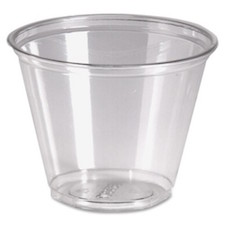 “Hard” feet for whatever application can be even easie, and seem to be the best choice for mounting speakers and other things that you want to solidly couple to whatever they’re resting on. Ordinary roofing nails (the kind with the big head and very short body) can work just fine as hard feet, and you can make them more presentable-looking by cutting a wine-bottle cork across its length, so that it becomes two or more short cylindrical sections, driving the nail all the way through one section,, and giving however many of them you make a shot of spray-can flat black paint. To use feet like these, just set them point down, with your speaker (or whatever) resting on the broad head, not the cork part. If you’re worried about poking holes in the floor or the furniture, just use ordinary copper pennies under the points. The copper will protect the underlying surface and is still soft enough that the point of the nail will push into it to make a solid coupling.
“Hard” feet for whatever application can be even easie, and seem to be the best choice for mounting speakers and other things that you want to solidly couple to whatever they’re resting on. Ordinary roofing nails (the kind with the big head and very short body) can work just fine as hard feet, and you can make them more presentable-looking by cutting a wine-bottle cork across its length, so that it becomes two or more short cylindrical sections, driving the nail all the way through one section,, and giving however many of them you make a shot of spray-can flat black paint. To use feet like these, just set them point down, with your speaker (or whatever) resting on the broad head, not the cork part. If you’re worried about poking holes in the floor or the furniture, just use ordinary copper pennies under the points. The copper will protect the underlying surface and is still soft enough that the point of the nail will push into it to make a solid coupling.
For more soft feet, you can just use the wine corks,(or sections of them) themselves – either standing vertically or lying on their sides. And another kind of hard feet can be found in the plumbing section of your local hardware store: Look for short white, gray, or black plastic pipe couplers. I’ve got two of those on the desk in front of me right now: One is gray and 1″ OD, x 1 ½” long. The other is white PVC, 1 5/16″ OD x 1 ¼ long, with an octagonal “head” on one end, and has been spray painted black by me. Both are very cheap, entirely presentable in appearance (especially after the black paint job), and both kinds can be used with others like them, either just as good. non-scratching, non-poking hard feet or (as I typically tend to use them), as combination hard foot/spacers to use between stacked electronic components to provide more and better air circulation between hot-running devices.
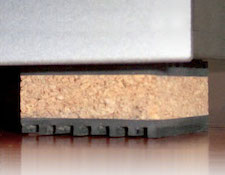 The point of all this is simple: there are things out there that you can use to make your system sound better, and even – where better cooling is the result – make it last longer, with less service. Many of them weren’t specifically designed or made for audio purposes, but so what? As long as they work to do what you want them to do, that’s all that matters.
The point of all this is simple: there are things out there that you can use to make your system sound better, and even – where better cooling is the result – make it last longer, with less service. Many of them weren’t specifically designed or made for audio purposes, but so what? As long as they work to do what you want them to do, that’s all that matters.
Actually, there IS something else, too: Not being designed for High-End audio, they don’t carry High-End price tags. I don’t know about you, but at least for me, that’s important, too.


